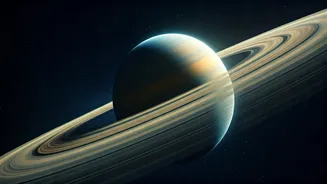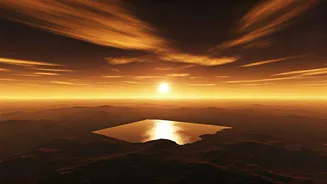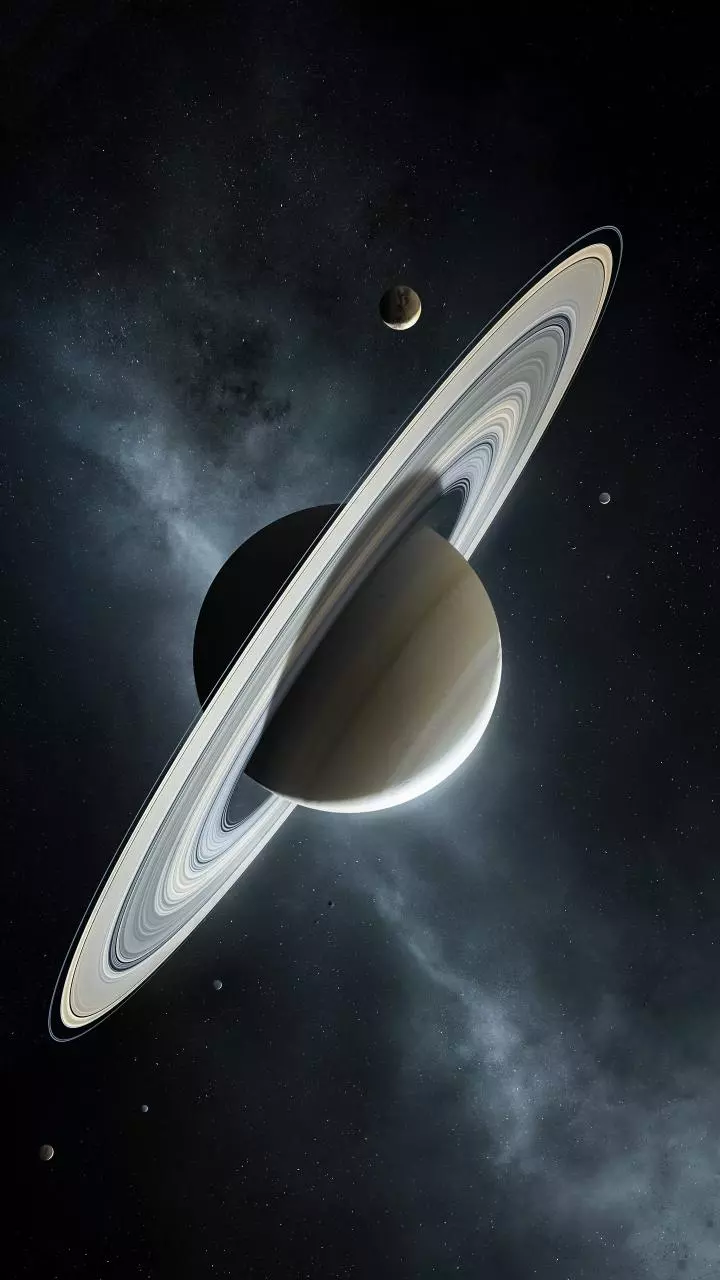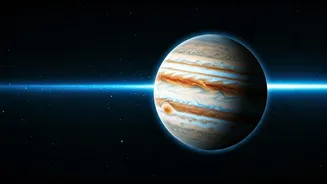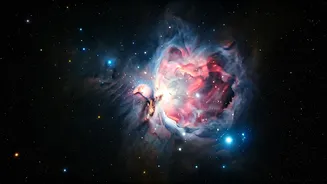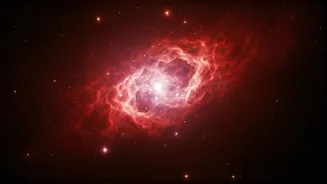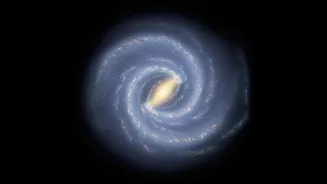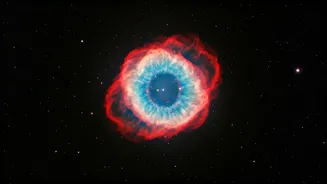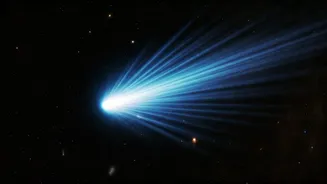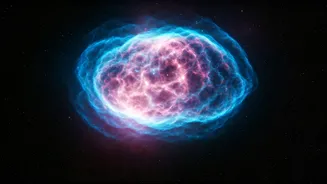Saturn's Spectacular Rings
Saturn, known for its majestic rings, features a system of icy particles, ranging in size from microscopic dust grains to massive chunks. These rings aren't
solid; they're made of countless individual pieces of ice and rock, constantly colliding and interacting. The rings are organized into several distinct bands and gaps, formed by the gravitational influence of Saturn's numerous moons. The James Webb Space Telescope has captured stunning images of Saturn and its rings, revealing unexpected patterns and details. These discoveries offer new insights into the formation, composition, and evolution of the ring system, adding to our understanding of how planets and their surrounding materials develop over time. Further study promises to reveal even more about the nature of this remarkable feature.
Moons: Titans and More
Saturn boasts a diverse family of moons, with over 100 officially recognized. The most prominent is Titan, a world larger than the planet Mercury and possessing a dense atmosphere. Titan's atmosphere, primarily nitrogen, has a complex organic chemistry, potentially similar to the early Earth's atmosphere. Studies using the James Webb Space Telescope have observed clouds and liquid bodies on Titan, hinting at methane lakes and rivers. Another intriguing moon is Enceladus, which erupts icy plumes from its subsurface ocean. These plumes contain organic molecules, suggesting the possibility of life. Mimas, another moon, may also harbor an ocean beneath its icy surface. The continuous exploration of these moons is crucial to understanding the potential for life beyond Earth and the various processes that have shaped these celestial bodies.
JWST's Astonishing Findings
The James Webb Space Telescope (JWST) has revolutionized our view of Saturn, providing unprecedented details and insights. The JWST has detected unusual patterns in Saturn's atmosphere, including 'dark beads' and peculiar star formations, which were previously unseen. The telescope's infrared instruments have detected exotic ices on other worlds, broadening the scope of what we know of the make-up of objects in space. In addition, the JWST is studying 'The Accident', a failed star, to try and solve an old mystery regarding Jupiter and Saturn. These high-resolution images and data are enhancing scientists' grasp of atmospheric conditions, ring dynamics, and the complex interaction of Saturn's moons, adding an unexpected layer of depth to what was previously known. These findings are reshaping our perception of Saturn and highlighting the importance of cutting-edge technology in space exploration.
Liquid on Titan
One of Saturn's most intriguing moons, Titan, possesses liquid on its surface, a unique feature in our solar system aside from Earth. However, the liquid found on Titan is not water, but rather hydrocarbons like methane and ethane. The James Webb Space Telescope's observations are continuing to offer a better idea of how these liquids behave. But something is missing, puzzling scientists: the absence of certain compounds. The nature of these liquids and the specific compounds absent are under active investigation. Titan's atmosphere is also complex, making this search even more interesting. Scientists are analyzing the atmospheric composition and the interactions of these liquids with the environment, which could provide clues about planetary conditions and chemical reactions.
Rocket Wreckage
In an unrelated event, mysterious wreckage was discovered in the Australian Outback, which was later determined to be a part of a Chinese rocket. While the exact origins and cause of the rocket's impact are still being investigated, this incident serves as a reminder of the increasing space activity and the associated potential risks. Such events highlight the need for international cooperation and regulation in space. As space exploration intensifies, incidents of this kind remind us of the hazards involved in these types of activities and the need for stringent safety regulations and protective measures to mitigate potential damage.
Enceladus's Organic Output
Enceladus, one of Saturn's moons, is of particular interest due to its potential for supporting life. This moon is actively ejecting plumes containing organic molecules from its subsurface ocean into space. These organic compounds, essential building blocks for life as we know it, have captured the attention of scientists. The presence of organic molecules in the plumes raises exciting questions about the potential for biological activity within Enceladus' ocean. Spacecraft missions are designed to analyze these plumes and ocean waters, hoping to find evidence of life. This ongoing quest to learn more about the makeup of Enceladus is fueling scientists to learn more about life on this moon.
Mimas and Hidden Oceans
Mimas, another of Saturn's moons, is also under scrutiny for the possibility of an ocean beneath its icy surface. If confirmed, this would significantly expand the number of ocean worlds in our solar system. The potential for an ocean on Mimas is raising exciting possibilities and prompting scientists to design future spacecraft missions. These missions would aim to thoroughly investigate Mimas's subsurface structures. Uncovering an ocean within Mimas would also provide valuable insights into the formation and evolution of Saturn's moons, enhancing our understanding of our solar system's complexities and possibly hinting towards the existence of a habitable environment.
